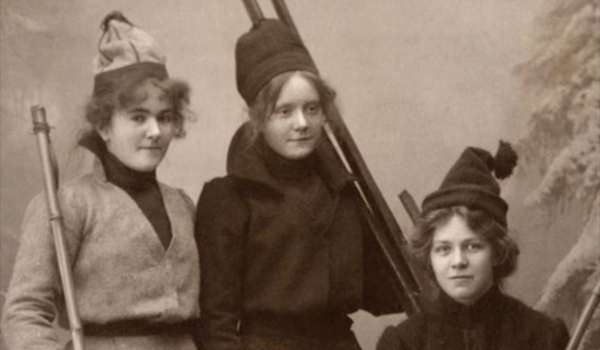
Skirting The Issue
As we turn to Sweden in our brand new Luna issue of Selvedge, we take a look back at issue 61, and explore the politics and practicalities of female skiers in Sweden at the start of the 20th century...

Today the UK government encourages women to be physically active for at least an hour a day; in the 1900s women who wished to enjoy the great outdoors had to overcome some pretty sizeable social challenges. Outdoor activities were considered decidedly unfeminine, and the impractical dress code for bourgeois women underlined that fact. Did that keep women from climbing mountains, skating, skiing or hiking? It did not. From the end of the 1800s to the 1930s they donned their so-called ‘tourist costumes’ (some men dubbed them ‘hermaphrodite costumes’) and strapped on their skis. In the process they transformed women’s dress, facilitated women’s liberation and even broke the established power structures of society.

The phenomenon of skiing for pleasure broke through in Sweden in the 1880s, but Norway was the forerunner, organizing the first modern ski competition in 1843, and the first ski race officially open to women in 1870. It took another 24 years for the Swedish Association for Ski Promotion to follow suit and include women in their competitions. The urban bourgeois men who made up the association graciously allowed women and girls to participate in cross-country skiing, at distances of two and five kilometres; it would, from their perspective, offer benefits in the form of increased physical beauty and stamina for motherhood.

Despite these shaky foundations a movement for change was being built and it was international. In America, Amelia Bloomer launched her notorious bifurcated dress – a knee-length skirt over long, wide trousers. In the 1850s the garment caused outrage and ridicule, but the radical innovation was vital to the development of sportswear and swimwear during the second half of the 1800s. Inspired by events in Anglo-Saxon countries, dress reform took root in Sweden. The Dress Reform Association was founded in 1886 by intellectual women in Stockholm who worked to discard impractical long skirts and laced waists. A woman’s ski costume that emerged with particular prominence about 1900 was the so called 'Lapp costume', consisting of a full-length frock, a breast cloth, belt and cloth cap. This outfit – today we would call it a Sami-inspired ski outfit – was an urban phenomenon…
To read this article in full, order your copy of Selvedge issue 61 here.
You can also order your copy of the new issue of Selvedge here, featuring the most recent work of Sami-born artist Britta Marakatt-Labba.
To browse all of our different subscription offers, click here.
